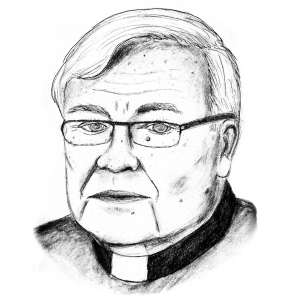 A number of recent retrospective evaluations of Pope Francis and his first year as the leader of the Catholic Church have attempted to discern what the influences of his personality and style of leadership could be. Several observers have suggested that as a Jesuit, Francis inherently reflects that tradition. But how Francis specifically reflects the Jesuit tradition is just one facet of the Society of Jesus.
A number of recent retrospective evaluations of Pope Francis and his first year as the leader of the Catholic Church have attempted to discern what the influences of his personality and style of leadership could be. Several observers have suggested that as a Jesuit, Francis inherently reflects that tradition. But how Francis specifically reflects the Jesuit tradition is just one facet of the Society of Jesus.
Let’s add one more, the idea of the pilgrimage. Examining his apostolic exhortation, “The Joy of the Gospel,” you’ll find that the term “pilgrimage” or its equivalent appears some 13 times. Let me unpack the significance of pilgrimage within the Jesuit tradition to suggest why it has significance for today’s Georgetown students.
In his dictated memoir, Ignatius Loyola, the founder of the Jesuits, characterized himself, especially in his early years as “the pilgrim” — one whose life had become a constant search. Ignatius asked fundamental questions: What is God asking of me? And where should I spend the rest of my life?
In his Spiritual Exercises, Ignatius opened up that same kind of pilgrimage experience to the woman or man who undertakes that retreat experience. Later, when Ignatius and his earliest companions tried to describe what kind of religious order they would be, their simplest expression was a community that was on “a kind of journey to God”; that is, a pilgrimage. You get the idea.
Pilgrimage had morphed into a symbol for Jesuit life and work, a search to find out how best to help people find God’s leadership in their lives. This is an important element in the founding heritage of Georgetown University. Why is the symbol of the pilgrimage so important in the Ignatian heritage of Georgetown? To answer this, we have to look at the variety of ways to explore the meaning of a pilgrimage and what it means to be a pilgrim.
First, a pilgrim is not a tourist. A tourist undertakes a journey in order to look at a city, a historical site, a beautiful view or to experience a different culture. What is important for the tourist is the destination, which isn’t so for the pilgrim. The pilgrim undergoes the journey as a process of insight and change. The pilgrim is looking for personal meaning and challenge. As one writer so described this divide: A tourist goes through a city while a pilgrim lets the city go through him or her. Tourism is a way of entertainment; pilgrimage is a way of enlightenment.
Second, the pilgrim opens himself to a kind of conversion — a change of values or a deeper appreciation of values already held but now made more deeply one’s own possession. The tourist is primarily concerned with satisfying curiosity about a locale or a culture.
Finally, pilgrim and pilgrimage stand for self-discovery and self-direction. That is one reason why so much of our literary tradition centers on the journey motif, from classics like Homer’s “Odyssey” or Dante’s “Divine Comedy” to more contemporary works like Cormac McCarthy’s “The Road.” The pilgrimage suggests the journey of life, and the pilgrim stands for the woman or man searching for the meaning of life. The tourist is primarily occupied with what lies outside oneself — the attraction at the end of a journey. The tourist looks; the pilgrim engages.
How does the Ignatian symbol of pilgrimage play out in the culture of Georgetown? First, the symbol has influenced the enduring legacy of the university as a place of searching — for meaning in the intellectual work that forms the university, for personal direction in a woman’s or man’s life choices and for sifting through the competing values of our culture to embrace those that most authentically speak to your mind and heart.
Second, the Ignatian tradition takes seriously that the pilgrimage of life is profoundly spiritual and frequently and intensely religious. How that spiritual quest settles on a name and incorporates a personal program of fulfillment is worked out in the sanctuary of a man’s or woman’s own heart. But Georgetown invites, sustains and encourages reverence for the mystery that is part of a genuine pilgrimage.
If this kind of search guides a pope, it is worth considering joining him in making it continue to happen at Georgetown.
Fr. Howard Gray, S.J., is the assistant to the president at Georgetown University. AS THIS JESUIT SEES IT … appears every other Friday.



















